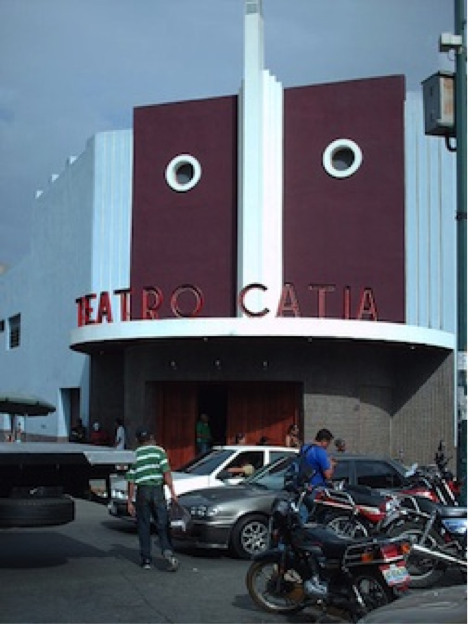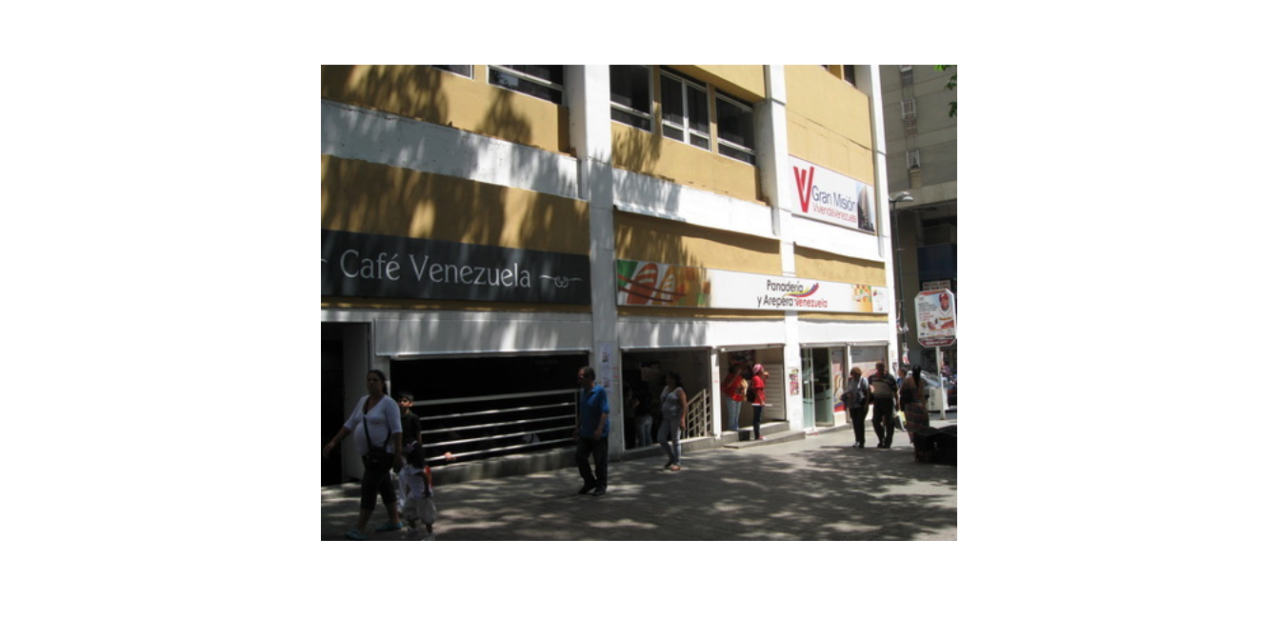A few nights ago I opened up my laptop and sat down with Adriana, a “vocera” (spokesperson) of the now largely defunct “consejo comunal” (community council) on my street, who I lived with in 2010 and 2011. She had asked me to help her fill out another online form to petition for government housing, which I also did with her last summer while here. A single mother with four children, Adriana and two of her children live in the one bedroom allotted to her by her cousin. Adriana desperately wants a home—or what she refers to as a “future”—for her children. I rarely have a conversation with her where the tension and precariousness of her housing situation does not arise. Adriana has sent multiple housing applications to the government for over three years now, receiving at most a confirmation that her application has arrived.
A few days after sending in her application, some of my neighbors organized a “toldo rojo” (a temporary campaign stand where Chávez supporters pass out party publicity) at the bottom of the street. As soon as Adriana got off of work she headed down to the toldo rojo to hang out with the other voceras and watch her children as they passed out pro-Chávez fliers. As I sat around and listened to people discuss their support for the President, Adriana, with a serious look on her face and shaking her head solemnly, said, “No, no hay otro president…Chávez para siempre!” (There is no other president… Chávez forever!)
Catia, the western section of Caracas where I have lived off and on since 2010, is made up of a massive grouping of lower-class barrios. Most of the housing here was constructed by residents themselves, many of whom do not own titles to the land they live on; multiple families often live in two or three bedroom apartments; and, due to poor infrastructure, much of the housing is considered “precarious,” or unsafe to live in.
Given these conditions, housing is an important concern for many of my neighbors. However, none of the Chávez supporters that I know have benefited from the housing missions; and, as Marino Alvarado noted in a previous post, housing construction has been slow at best until this year. Why, then, do many of my neighbors continue to support Chávez when they, and those around them, have not benefited from the heavily touted housing mission?
By contextualizing the issue of housing, I would like to lay out reasons why some residents of Los Magallanes de Catia—a stronghold of the government—continue to associate Chávez with a brighter future, even if they have not personally benefited from some of the missions highlighted by both the President and the U.S. media. Here, I provide three considerations that affect how residents’ perceive their lack of access to housing: The presence of refugees living in Catia, quality-of-life projects initiated by the government, and a continued belief in the Bolivarian vision. While housing is undoubtedly an important consideration for voters in Catia, the persistent housing shortage here does not necessarily mean that these voters will choose Capriles over Chávez come October. This is because my neighbors’ concerns over precarious housing are situated within their everyday experiences of living in Catia, experiences that confirm their belief that their lives are better now than they were before Chávez.
Much of the news on the Venezuelan elections highlights the immense amount of funds being spent by the Chávez government to win the October elections. For example, a recent New York Times article suggested that a key part of the government’s plan to win the elections is with a highly publicized housing lottery. Without a doubt, a major consideration for voters is whether or not they perceive that the government has improved their living situation. And this is true in any country.
Though it is difficult to obtain the official current numbers, by 2007 according to Provea around 13 million Venezuelans did not “enjoy the right to adequate housing.” These overwhelming numbers beg the question: What government on the planet could construct enough housing by October to win over this many votes? The strategy of buying votes for October 7th with housing simply cannot win over the millions of lower-class voters who need houses.
Barrio residents, more so than any other Caraqueños, recognize the complexity of the housing situation. Indeed, they live in the amazing labyrinths that make policing, sanitation, and transportation seemingly impossible. A police officer whom I interviewed even went so far as to suggest that the last time the state adequately dealt with the housing issue was under the military dictatorship of General Pérez Jiménez, whose strategy was to build the superbloques of 23 de Enero, now named for the date of his overthrow. The enormity and geographical complexity of the barrios intimately organizes the lives of its residents and, as the police officer noted, makes housing provision appear to be an almost impossible task.
However, there is another justification that people I talk to often provide to explain why they are still on a waiting list: The visibility of disaster refugees in Catia. The past two years in Venezuela have seen tremendous rain and flooding, with thousands of people displaced and relegated to temporary housing. Indeed, flooding in 2010 alone left 140,000 Venezuelans without housing.
The disaster refugees who live in housing limbo in Catia are not hidden away; rather, temporary shelters are located in areas that many barrio residents frequent. For example, last summer I accompanied my neighbor Veronica to her sons’ soccer games. Every Saturday Veronica and her children head up to the Nucleo Fabricio Ojeda, a massive site built by PDVSA in 2004 that has soccer fields (a rare find in the overpopulated barrios), a Mercal (the state subsidized food market), and a Barrio Adentro (which provides free OB-GYN, pediatric, and trauma services). I had visited the Nucleo a few years before, but when I went back last year Veronica showed me a gigantic metal building that housed hundreds of refugees waiting to be transferred to permanent housing.
Or, take Ciudad Bolivariana as another example. I recently visited a community radio station located in this government-constructed site in Catia. After visiting the station the radio’s manager took me on a tour of the grounds. He pointed out a metal building, similar to the one at the Nucleo, that he said housed around 800 refugees waiting for permanent placement. The Ciudad Bolivariana also houses a Centro Médico de Diagnóstico Integral, the highest level of the Barrio Adentro program, which provides a range of services, from free lab tests to prescription glasses given out by the Cuban-run eye clinic.
Thus, every time barrio residents utilize these services and spaces, recognized by them as benefits never seen in the popular sectors before Chávez, they confront a visible justification for why their applications might go unanswered. So, when I ask Adriana why she has not received a reply to her applications she answers that she cannot even begin to imagine how many people are on the list in front of her. According to Adriana, she understands that there are priorities, and that refugees top the list. As a last example, when I arrived back in Catia in June, the first thing I noticed coming out of the subway was the high-rise building that had been recently refit and remodeled by the Gran Misión Vivienda. When I asked a neighbor—also wait-listed for housing—who was living in the apartments she replied with no hesitation: refugiados (refugees).
Apart from housing, there are other ways in which people evaluate the government’s contribution to what could be considered “quality of life” measures in the Catia. For example, on days off work or national holidays, many of the women I spend time with here take their children to the park nearby, which has undergone various renovations and improvements funded by PDVSA and Caracas’s pro-Chávez mayor. In the past year the park has been outfitted with new exercise and playground equipment, and a Café Venezuela (a state-owned cafeteria that sells products at “solidarity prices”). I have also attended a number of free events—numerous concerts, an opera, and the symphony—with these women at the Teatro Teresa Carreño and La Estancia. As some of my neighbors have explained to me, both of these cultural sites, located outside of Catia, were largely inaccessible to them before the Chávez government; according to them, these spaces were private, cost-prohibitive, or unwelcoming to lower-class Caraqueños before La Revolución.
Catia residents now also have the option of going to the Teatro Catia (photo taken by Laura Fiorucci), renovated by the mayor this year. Though the space had been empty since the 1980s, it now holds plays, children’s activities, and political events throughout the week. I went to the theater about two weeks ago to see a neighbor graduate from a free cosmetology course offered through the Gran Misión A Toda Vida Venezuela. The theater is beautifully renovated with hardwood floors, plush maroon seating, and a well-lit stage.

Closer to the metro stop sits a newly opened Panadería Socialista and an Arepera Socialista (see first photo above, by author). Due to price controls, both of these businesses sell food items for much less than what you would find in your everyday bakery or arepera. For example, while an arepa (a basic food staple in Venezuela) on the street might cost anywhere between 20-30 bolívares, the arepera socialista sells them at around 7-10 bolívares. Adjacent to these sits another Café Venezuela. When visiting the cafe recently I noticed a quote on the wall, which reminded its customers that the product they were consuming was “hecho en socialismo” (made in socialism). While none of these spaces and renovations make up for dignified housing, they do provide public recreational and social spaces in a part of Caracas where they were previously lacking. More importantly, they suggest to some barrio residents a vindication and recuperation of barrio life.
On this point, I would like to suggest that articles like those in the New York Times create an image that the Chávez government’s “housing lottery” is important simply because it appeals to the immediate material necessities and interests of those in the lower-classes. However, people do not only vote based on what they believe the government can do for them today. Take the upcoming elections in the United States for example. Many left-leaning voters have spent the past few years critiquing Obama’s healthcare package, economic stimulus plan, and his support for the wars in Iraq in Afghanistan. In other words, they feel that the changes Obama promised in 2008 have not materialized. However, many of these critics will vote for Obama come November. Why? Because they believe in the vision he proposes for the future and because they view the alternative as a stark rejection of that vision.
Similarly, many barrio residents, who also have their critiques of Chávez, will support him for what missions and community projects in the barrios represent, rather than based on what they have achieved up to this point. While Chávez supporters know that programs like Mercal, Barrio Adentro, and the housing missions are far from perfect, for many they represent—as did Obama’s healthcare proposal—a step in the right direction.
I once asked Adriana—who is acutely aware of the low participation, infighting, and whispers of corruption that keep her community council from functioning—why she continued to participate in this government-community initiative. She answered, “Because one day, at some point, there has to be some little light of hope that will open up, and I want to see that reality. I want to see my community beautiful.”



